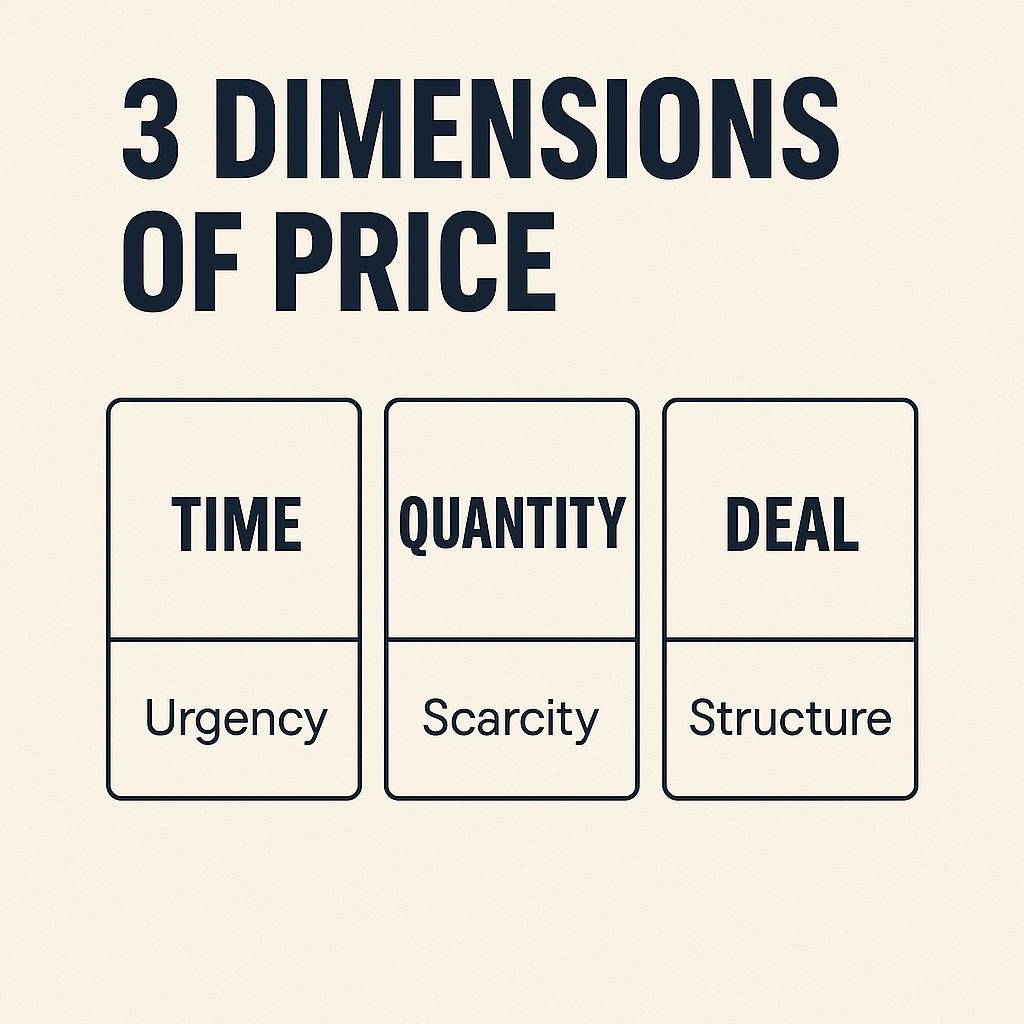- TikTok Shop Playbook
- Posts
- 🧭 Is Price the Only Thing Customers Care About During BFCM?
🧭 Is Price the Only Thing Customers Care About During BFCM?
Every brand is running a discount this month.
Everyone’s screaming 30% off, 40% off, buy one get one free.
And yet — if price were truly all that mattered, the cheapest shops would win every year.
But they don’t.
The reality is: people don’t buy from the lowest-priced brand.
They buy from the brand that makes them feel like they’re making the smartest choice.
The illusion of “cheap = better”
Every November, brands enter what’s basically a collective race to the bottom. The assumption is that the only lever that moves people is price. Cut it low enough, and conversions will take care of themselves.
But the longer you’re in this game, the more you realize: customers are not spreadsheets. They’re humans running an internal equation of emotion × justification.
They ask:
Do I trust this brand?
Does this product actually fit my life?
Will I feel good when I buy this?
The discount just gives them permission to say yes faster. It’s not the reason they say yes.
The emotional logic of buying
Most purchases start emotionally and end logically.
BFCM gives shoppers an excuse to collapse that process.
The psychology is subtle:
Emotion: “I want this.”
Logic: “And now I have a reason — it’s on sale.”
So when a brand reduces everything to price alone, it removes the emotional hook. You can’t create desire through numbers.
Think about the brands people line up for — Apple, Nike, Dyson, Stanley. None of them are the cheapest. But every one of them sells meaning before they sell margin.
The real hierarchy of what customers care about
When you zoom out, customers don’t care about price in isolation.
They care about value, relevance, and timing.
1️⃣ Value — Does this feel worth it?
A $200 product can feel cheap if it solves a real problem.
A $20 product can feel expensive if it doesn’t.
2️⃣ Relevance — Is this made for me?
People don’t buy what’s universally good. They buy what feels personally right.
That’s why the same TikTok video that converts one person can be invisible to another.
3️⃣ Timing — Is this the right moment?
During BFCM, timing is everything. The desire to buy is already high; customers just need a nudge that feels aligned with that moment — urgency, restock, gift season, or self-care.
Price is just the surface. These three layers sit underneath it, shaping how the price is perceived.

The three dimensions of price perception
When I first heard this framework — that price actually has three dimensions: time, quantity, and deal — it completely reframed how I thought about value.
Time = urgency. A good deal means nothing if it lasts forever.
Quantity = scarcity. A product feels special when not everyone can have it.
Deal = structure. A coupon, bundle, or loyalty reward changes why the customer buys.
Together, these dimensions remind us that price isn’t static. It’s elastic, emotional, and contextual.
A $50 item can feel expensive one week and irresistible the next — not because it changed, but because the frame did.
So what are customers actually looking for?
In one word: justification.
Customers want to feel good about their decision. They’re looking for a reason to say yes that aligns with how they see themselves.
Some people buy because they value efficiency — “I’m getting this before it sells out.”
Some buy because they value belonging — “Everyone’s talking about this on TikTok.”
Some buy because they value self-reward — “I’ve worked hard all year; I deserve this.”
When a brand understands which story the customer is telling themselves, it doesn’t need to race to the lowest price. It just needs to speak to that why.

The paradox of BFCM
BFCM is funny because it’s both the most rational and irrational shopping event of the year. Everyone knows it’s marketing. Everyone knows prices will drop again in January.
And yet, people buy more during these few days than at any other point in the year.
Why?
Because it’s not about economics — it’s about permission.
For one weekend, customers feel socially and psychologically licensed to indulge.
To spend. To feel smart for saving. It’s a cultural ritual as much as a financial one.
So when you run a BFCM campaign, you’re not competing for who can cut deeper.
You’re competing for who can make people feel clever, excited, and justified.
What this means for brands and creators
If you’re selling on TikTok Shop this season, remember:
“your offer matters, but your energy matters more.”
A creator saying “you need this right now” creates urgency (time).
A “limited stock” tag amplifies scarcity (quantity).
A “bundle deal” or “free gift” adds perceived generosity (deal).
But beneath all of that — what truly drives conversion is trust.
The sense that buying from you is a safe, satisfying choice.
Because during BFCM, people don’t want the cheapest thing.
They want the best feeling at the best price.
A final reflection
Maybe the question isn’t “Is price the only thing customers care about?”
Maybe it’s “What does price mean to them in this moment?”
For some, it’s a signal of opportunity.
For others, a marker of quality.
For many, it’s simply a story that justifies desire.
This year, try thinking less about how low you can go —
and more about how deeply you can connect.
Because when a customer feels seen, price becomes relative.
And that’s when you stop selling discounts —
and start selling meaning.
💡 TL;DR
Price is not absolute; it’s contextual.
What customers truly care about: value, relevance, timing, and justification.
The 3 dimensions of price — time, quantity, deal — shape perception more than percentage off.
BFCM success = making customers feel smart, not cheap.